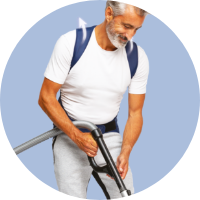
IFOP study commissioned by PERCKO (December 2022)
Musculoskeletal disorders in the workplace & the impact of back pain on the lives of employees

Musculoskeletal disorders (MSDs) are the most common occupational illnesses, a trend that is increasing year on year (up 14% since 2010). But what is the prevalence of back pain in a post-Covid world forever changed by the rise of working from home?
Conducted by Ifop for PERCKO, a startup specialised in products to relieve back pain, this study of physical suffering in the world of work highlights the prevalence of back pain in a workforce that often tends to underestimate its effect despite the profound impact it can have on their professional and personal lives.
Carried out on a sample of the French workforce, the study's results raise similar questions across borders. Why does back pain affect men and women differently? If working from home aggravates back pain, should we rethink its rollout? Are employees right to call for their employers to provide ergonomic equipment?
The incidence of back pain and other musculoskeletal disorders (MSDs) among employees
Back pain is the most common musculoskeletal disorder (MSD) among French employees and it's prevalence is highest amongst those working from home

An unavoidable public health problem. The vast majority of employees (86%) suffer from at least one MSD, especially women (90%) and the working class (88%). Back pain is the MSD with the highest prevalence among employees, affecting more than two-thirds of them (69%).

MSD-related pain is overwhelmingly attributed to work (according to 77% of those with MSD-related pain). Surprisingly this rate is highest amongst those working from home full-time (93%). And more predictably amongst labourers (91%), those who regularly carry heavy loads (89%), and employees suffering from daily back pain (86%).

Back pain is the most widespread form of chronic suffering. Far from being an old phenomenon, one-third of the workforce (33%) suffer from back pain at least once a week, especially women (38%), employees (39%) and labourers (36%). However, the study results once again remind us that the usual suspects, labourers, aren’t the most affected. The rate of chronic sufferers is actually highest among those working from home full-time (46%).
PERCKO’s take
According to Alexis UCKO, Co-founder of PERCKO “The results of this study confirm what we observe on a daily basis in the field in our dealings with companies (e.g. French rail operator SNCF) that we equip with prevention and back protection clothing. Amongst the 2,000 companies PERCKO works with, the prevention of MSDs has become an issue with a sizeable economic impact, in terms of productivity and absenteeism, but also and above all a social impact, with a strong impact on the morale and well-being of teams. By pinpointing an ailment that affects all employees, in all sectors and at all levels, this study reinforces our choice to develop specific products to tackle this widespread problem.”
The impact of back pain on the lives of employees
Back pain is underestimated by employers and often goes unreported by employees, particularly those in precarious financial situations, despite it's demonstrable impact on their professional and personal lives, particularly their social and sexual habits.
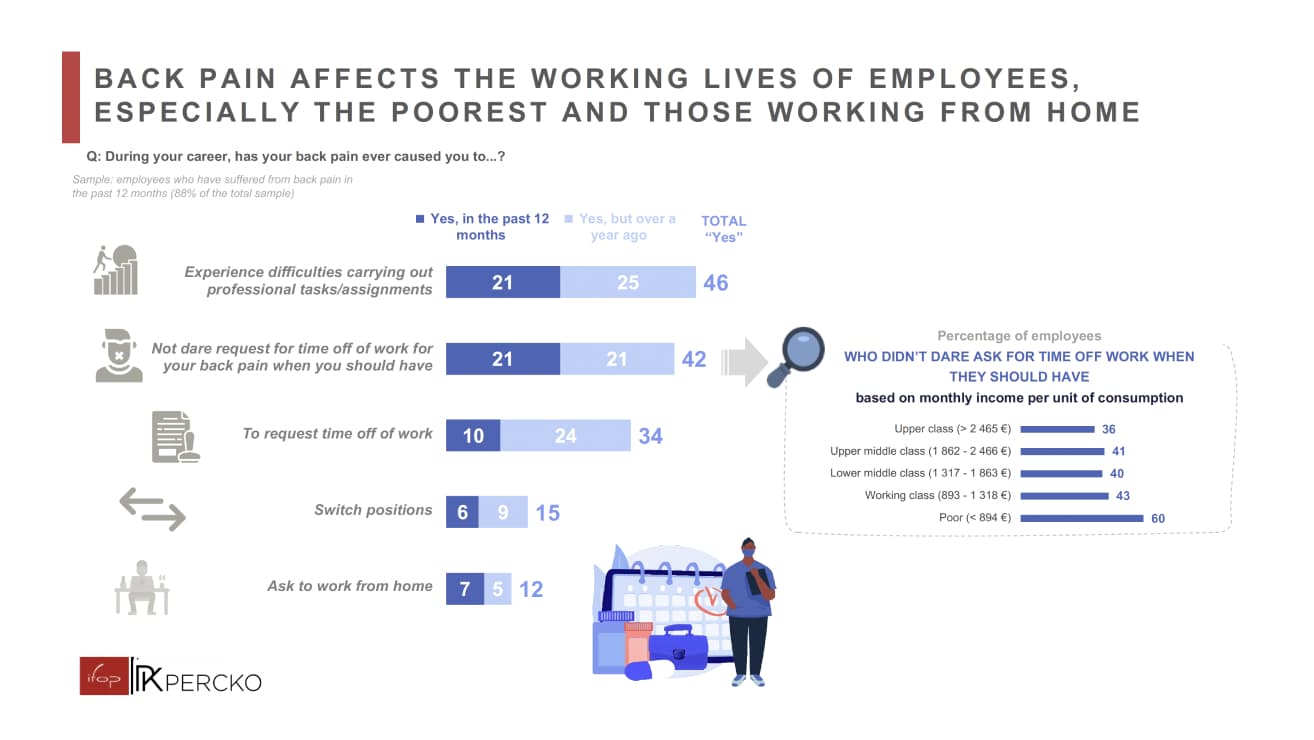
Back pain is wrongly, yet often, dismissed as benign, something that nothing can be done about. But it impacts the working lives of employees, especially those working from home and the poorest. Half of the employees surveyed suffering from back pain (46%) have already experienced difficulties carrying out work tasks/assignments for this reason.
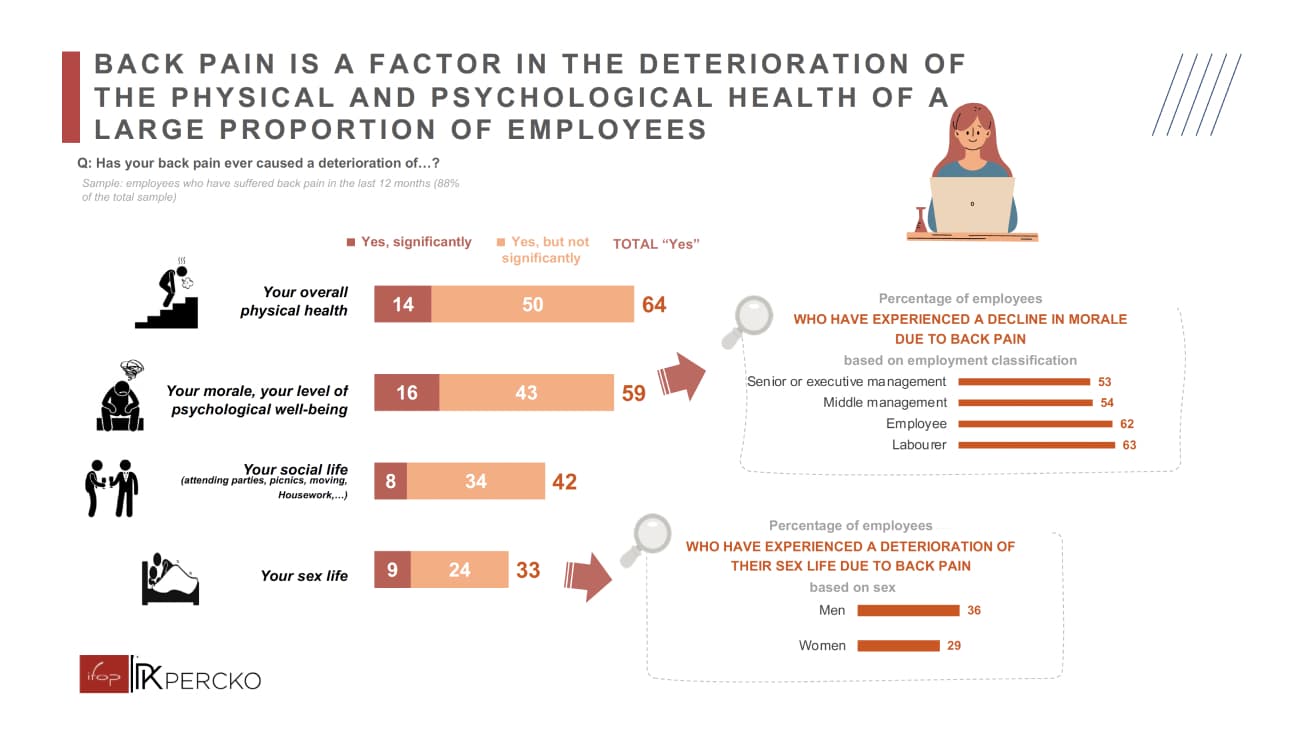
The suffering caused by back pain is dismissed with such frequency that it has almost become a taboo subject: the proportion of employees who don’t dare ask for time off work because of back pain when they should have (42%) is higher than the proportion (34%) of those who dared speak up and ask for time off. Those in precarious financial situations are the least likely to ask for time off because of back pain when they should: the majority (60%) of poor workers who have suffered from back pain in the past 12 months have already failed to do so.
Beyond work, back pain is also reported as a factor in the deterioration of physical (64% of those affected by back pain) and mental (59%) health of a large proportion of employees. It specifically affects the social lives (42%) and sexual habits (33%, including 36% among men) of a significant proportion of employees.
PERCKO’s take
According to Quentin Perraudeau, Co-founder of PERCKO “Back pain is disabling because it limits employees at all levels and at all times, both at work and in their personal lives. But the study also shows that this physical pain causes emotional suffering, with constant apprehension and a mental burden that is all the harder to bear because of the fear of stigma. Four out of ten employees think that their back pain is underestimated by their employers, and 60% of the most precarious employees do not dare to ask for time off work for this reason. At PERCKO, we have set out to create everyday products that can support working people. Our back relief vest is a medical device, designed to be discreet, offering peace of mind and psychological comfort.”
Employees’ position on the purchase of equipment to improve their working environment
Those working from home, the largest cohort of back pain sufferers, consider employers' involvement in their working environment insufficient and overwhelmingly support their funding of quality office chairs
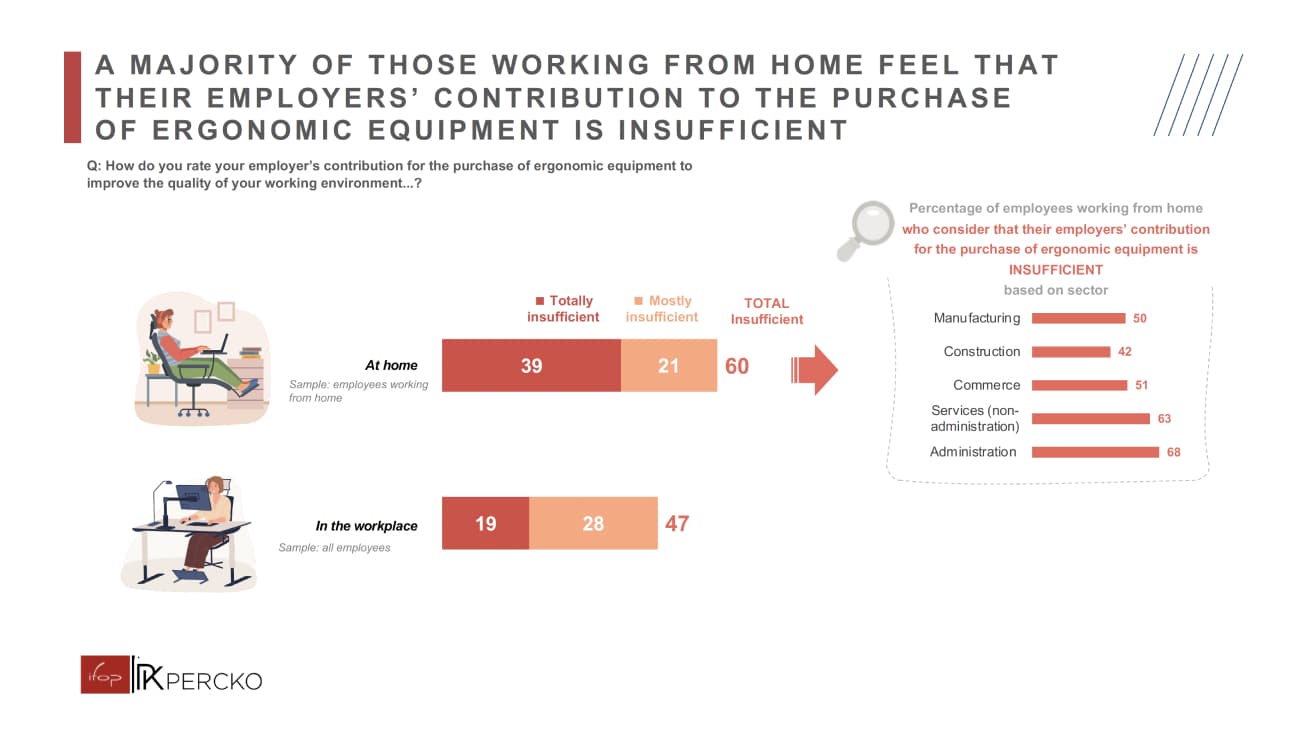
A majority of those working from home consider their company's contribution to the purchase of ergonomic equipment to be insufficient (60%). This number drops amongst employees who don’t work from home, with 47% unsatisfied with the purchasing of ergonomic material.
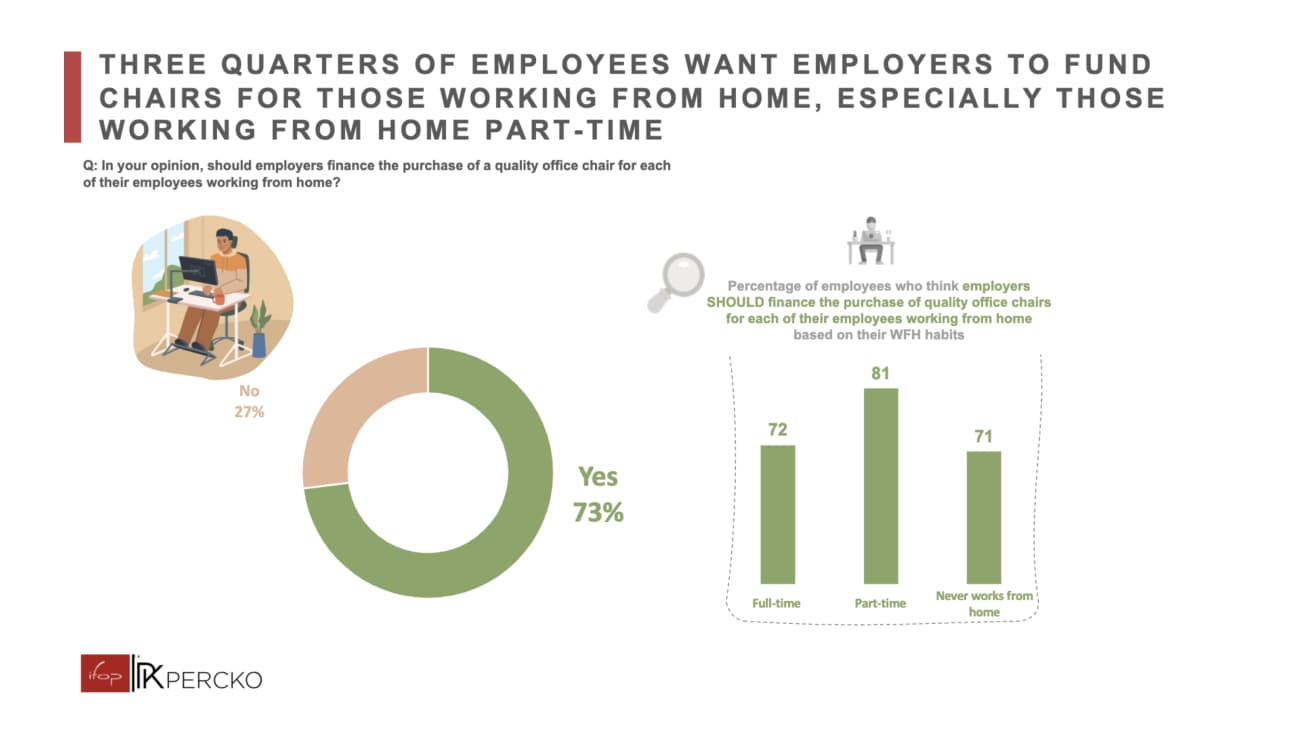
Three-quarters of employees (73%) want their employers to finance quality chairs for those working from home. This point is particularly salient amongst those working from home part-time (81%), senior or executive management (79%), and the upper class (80%).
PERCKO’s take
“This study aligns with a previous PERCKO study conducted during lockdown which showed an increase in back pain with the rollout of WFH, particularly because the equipment at home is often not ergonomic and not well suited to successive working days. We saw a sharp increase in demand for our vests during this period. The increase in Flexi working within companies seems to be sustainable, but it is important to ensure that there is adequate ergonomic support both at the workplace and at home. It should be noted, however, that back pain is also linked to the age of employees. Workers over 60 are more affected, with more than half of them saying they suffer from back pain at least once a week.”

